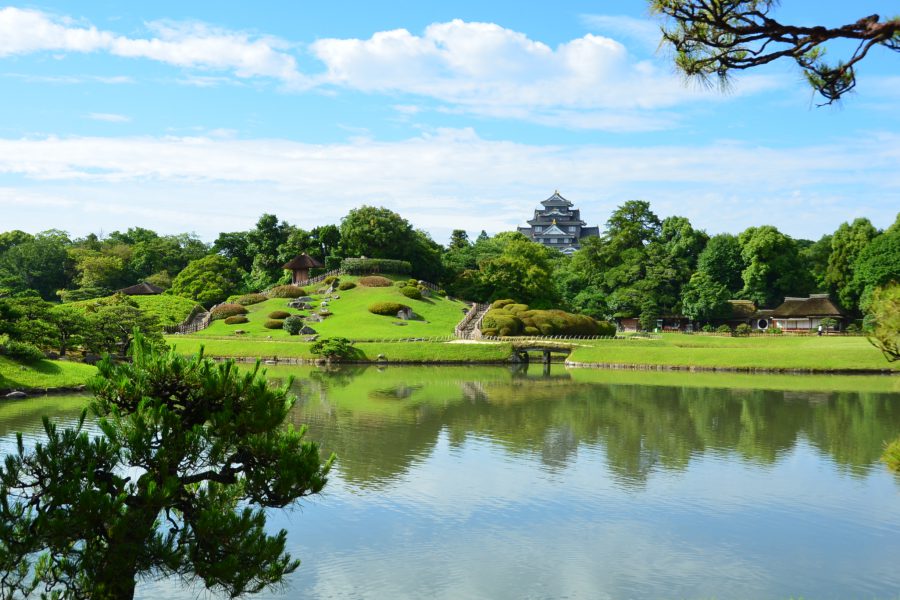Garden Knowing/
keywords
The Daimyo Garden
 Photo credit: Okayama Korakuen Garden
Photo credit: Okayama Korakuen GardenOkayama Korakuen Garden is a classic daimyo garden from Japan’s Edo period (1603-1868) located in Okayama Prefecture.
The Daimyo Garden
The daimyo garden is remarkable not only for being the largest-scale Japanese garden ever attempted, but also the first Japanese garden trend to originate outside Kyoto. In fact, these two attributes are not unrelated. In the seventeenth century, the Tokugawa government successfully unified Japan under its rule partly by replacing the Kyoto basin as the country’s political center with a new castle town called Edo (present-day Tokyo) located on the broad Kanto plain. The result was the emergence of a new garden patron: “daimyo” lords who had been given unprecedented access to large amounts of land, and needed to use it to entertain and impress political guests as an expression of their affiliation with the Tokugawa regime. Thus, daimyo gardens are distinctly the products of a new class of Japanese rulers with an equally new public concern for interregional diplomacy.
Seen from that narrow utilitarian standpoint, these gardens might well be looked upon as purely derivative and overgrown expansions of Kyoto’s strolling pond garden form. Yet such an interpretation overlooks how unique the daimyo garden was in terms of its relentless pursuit of social usability. Daimyo lords surrounded expansive ponds with architectural structures that let them create multiple scenic highlights and host activities such as tea ceremonies, Noh theater performances, and musical concerts. Their gardens borrowed freely from the tea garden’s scenic transitions, but also used them daringly to incorporate entertaining scenic references to exotic and faraway “famous places” (nadokoro) alluded to in classical poetry. The intense practicality of these gardens also meant they made maximum use of their natural topography, thus giving excellent expression to their respective regions’ local identities.
The daimyo garden thus developed exhaustively the strolling pond garden’s potential as a device for entertaining guests. Perhaps more than any other Japanese garden form, it is designed explicitly and unapologetically to be used. Yet such utility does not necessarily come at the expense of artistry. On the contrary, by pushing the usability of garden scenery to its furthest logical conclusion, the daimyo garden arguably evolved into a kind of composite art space condensing other Japanese garden styles together. The results of this panoramic synthesis have continued to resonate ever since in Japanese garden and park culture, including the modern garden style in Kyoto. Perhaps some credit is due to the daimyo garden, then, for the rich functional superiority that virtually all Japanese garden forms demonstrate today.
